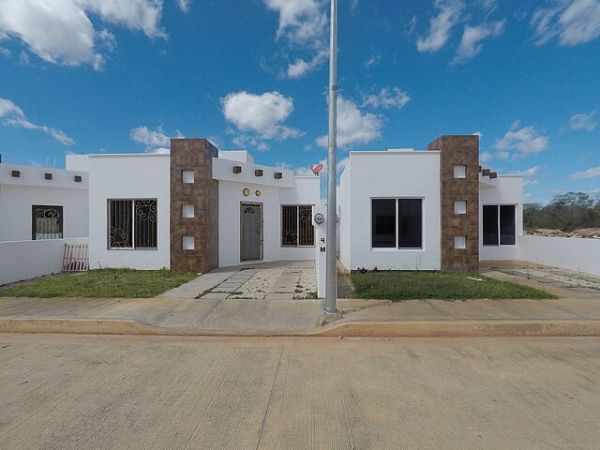Low-carbon housing is beneficial for financial savings and emissions reduction, Final Evaluation and Learning Exercise from “Mexico New Housing” finds

The “Mexico New Housing” NAMA Support Project (NSP) aims at promoting cost-effective energy-efficient building concepts in the housing sector in Mexico, with a particular focus on low-income housing. The NSP promotes the penetration of basic efficiency standards in the new housing market in Mexico as well as the upgrading of energy efficiency standards to more ambitious levels.
On this account, from July to October 2021, AMBERO and Oxford Policy Management undertook a final ELE on the Financial Component of this NSP. The NSP had a Technical Component as well that ended in 2017, which was already evaluated in 2018.
Below are some of the key findings of the ELE:
- Sustainable housing remains a prioritised government policy in Mexico. The NSP is relevant to the specific needs of different stakeholders in the low-carbon housing market, as it provides financial and technical support to Small and medium-sized enterprises (SMEs) housing developers and technical assistance and capacity development to other public institutions involved in the housing market.
- Projects supported by the NSP proved that low-carbon housing is beneficial in terms of financial savings, emissions reduction and increased comfort. This helped the market realise the potential business opportunities associated with it.
- The catalytic, demonstrational, and learning effects of the NSP indicate that the NSP may result in additional, large-scale and sustained GHG emissions reduction in the future, although the transformational change in the sector is still incomplete. The NSP appropriately built on the long-standing experience with sustainable housing in Mexico brought about by the country’s nationally appropriate mitigation action (NAMA).The financial cooperation, one major component of the NSP, worked alongside and strengthened existing instruments, such as the housing and eco-technology loan programs.
- As a result of the NSP, the low-carbon housing market seems viable and likely to continue even after the financial support from the NSP ends. The market has consolidated business models, and a large proportion of the developers are convinced of the benefits of low-carbon housing.
The following lessons learnt and recommendations were derived by the evaluators of the ELE for future NSPs in the low-carbon housing sector:
- The existence of well-established governance and regular coordination through meetings and information exchange between the delivery organisations of the technical cooperation (TC) and financial cooperation (FC) components and key stakeholders should be ensured.
- Stakeholder consultations should be involved in developing new low-carbon housing projects so that they respond to the local and emerging needs and context (e.g. hot water and heating needs by region, gender issues, mandatory technical requirements).
- Prioritising low-carbon housing applications according to the different climate zones could be considered. In temperate climates, eco-technologies produce fewer energy savings than they would in areas of extreme temperatures. Packages of appropriate eco-technologies covering the entire house must be put together. Because the ultimate goal of the NSPs is the reduction of emissions, more priority could be given to projects in extreme climates, where more substantial technical and financial support is required to maximise efficiency benefits across the entire house.
Following the main findings and recommendations of the ELE, the Technical Support Unit (TSU) has compiled a management response to address the key points that were raised.
The full “Mexico Housing” final ELE report is available in the Knowledge & Learning Hub.
The NAMA Facility is supporting NAMA Support Projects (NSPs) that drive sector-wide shifts toward sustainable, irreversible, carbon-neutral pathways in developing countries and emerging economies. All NSPs with an overall duration of more than three years are subject to a mid-term and to a final evaluation and learning exercise (ELE). These ELEs are part of the NAMA Facility’s working approach to catalyse transformational change through incremental monitoring processes that allow fearless learning.
The TSU has commissioned AMBERO and Oxford Policy Management to conduct the ELEs. The exercise is based on a theoretical framework which involves a document review, participatory workshops and stakeholder interviews to collect evidence about NSPs’ results and lessons. These elements are then analysed using a theory-based approach centred on the use of contribution analysis and reinforced by elements of process tracing. The ELEs seek to address the following questions:
– Has the NSP achieved its results?
– Has the NSP started to trigger transformational change?
– What was learnt from the NSP so far?
